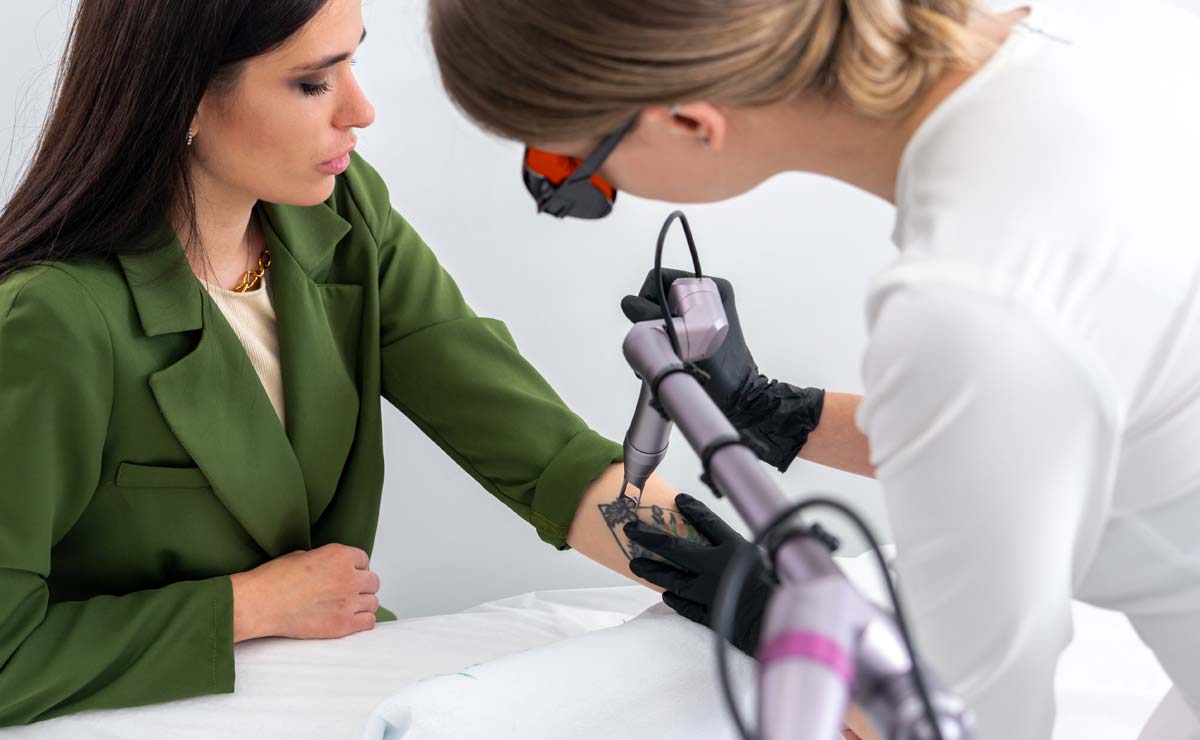Q-Switch / Q-Switched Nd:YAG Laser and Picosecond Laser (sometimes called Pico Laser) are both advanced technologies that are commonly used in aesthetic treatments to address a range of skin concerns, including tattoo removal, pigmentation removal and skin rejuvenation. We take a look at the technical differences and applications of the Laser technologies.
Q-Switched Nd:YAG Laser
The Q-Switched / Q-Switch Nd:YAG Laser is a type of Laser used in medical and aesthetic procedures. It works by producing short pulses of high-intensity light that are absorbed by the targeted tissue, which can be anything from pigmented lesions to tattoo inks.
How it works:
- The Nd:YAG Laser crystal is excited by a flash lamp or diode, causing it to emit light at specific wavelengths.
- The Laser beam is then focused by a lens, then directed onto the targeted tissue.
- The energy from the Laser is absorbed by the targeted tissue, which causes it to heat up and break down.
- As the tissue breaks down, it releases pigments or other substances that are then removed by the body’s natural processes.
The Q-Switched Nd:YAG Laser is unique in that it produces very short pulses of light (measured in nanoseconds) with very high peak power. This allows it to selectively target pigmented lesions or tattoo ink without damaging the surrounding tissue.
Additionally, the Q-Switched Laser uses a “Q-Switch” mechanism that allows it to rapidly switch on and off, producing pulses of light that are very intense and short. This helps to minimize the amount of heat that is transferred to the surrounding tissue, reducing the risk of side effects.
How it works:
- The Picosecond Laser uses a high-power Laser diode to generate pulses of light at a specific wavelength (usually 755 nm or 1064 nm).
- The Laser beam is focused onto the target area, such as tattoo ink or a pigmented lesion.
- The ultra-short pulses of light delivered by the Picosecond Laser create a photoacoustic effect, which means they produce a mechanical pressure wave that breaks apart the pigment in the target tissue into smaller fragments.
- The smaller pigment fragments are then expelled by the body’s natural immune system.
Picosecond Laser can deliver shorter pulse durations, which means it can break apart pigments into smaller fragments with less thermal damage to the surrounding tissue.
This can make it more effective for treating certain types of pigments, such as stubborn tattoos, while also reducing the risk of scarring and other side effects.
Picosecond Laser can also be used on a wider range of skin types and colours, as it is less likely to cause hyperpigmentation or hypopigmentation, compared to older Laser technologies.



